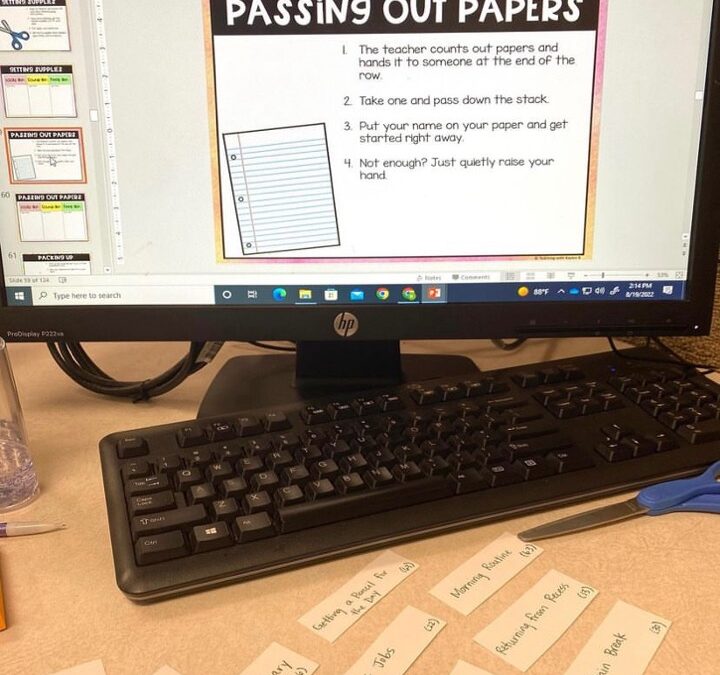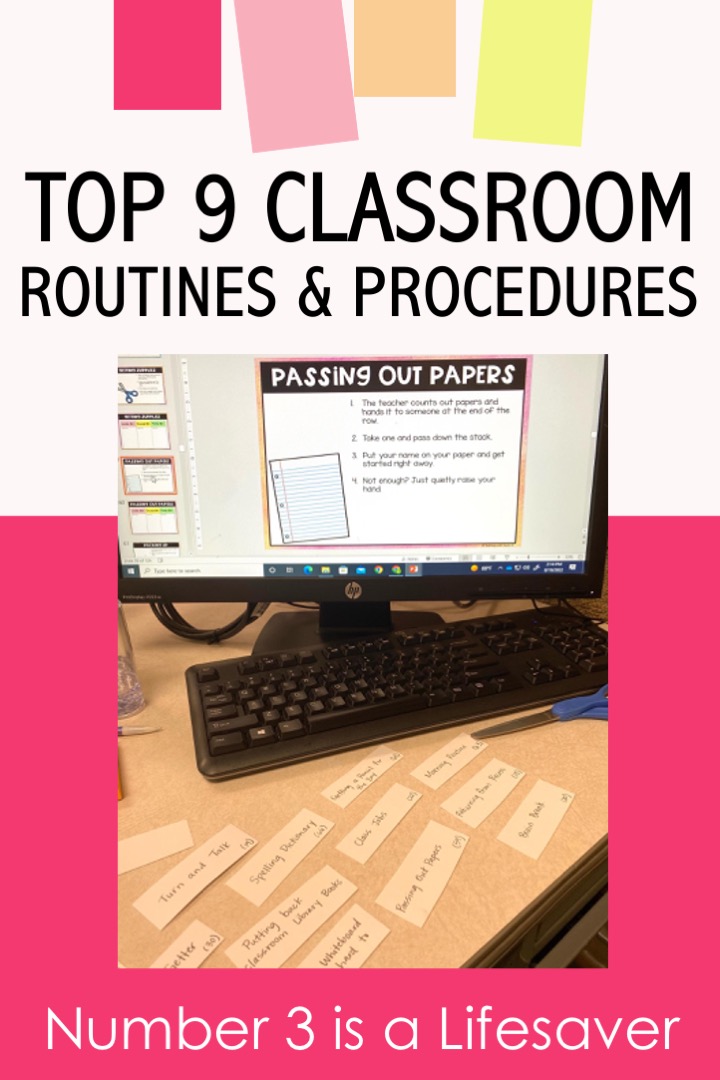
This list of classroom routines and procedures helps me start the school year out on the right foot.
How do you have a successful running classroom? Classroom routines and procedures! Just like businesses and restaurants have procedures and routines for employees to follow, teachers need routines and procedures to help their classroom to run efficiently! Routines and procedures in the classroom allow students to be more responsible and they save valuable instructional time. They are also a way to save us teachers our brain power because we don’t have to be explaining to our students how to do every single thing every day. And for me, that’s the biggest win when it comes to teaching my students our classroom routines and procedures.
Learn exactly how and when I introduce these classroom routines and procedures in my first week of school plans. This is a free google docs where I have typed up everything I do the first week of school and you can tweak things to your needs. Get your free copy here. It also comes with my Back to School Checklist to help you save time and brain power this back to school season!
It is so important to practice procedures with your students at the beginning of the school year. As students practice those procedures, they become routine! Students know what to do in almost every situation. Making less questions for you to answer, less chaos, and more learning time for students.
I have made a list of the top 9 most important classroom routines and procedures that I think every elementary classroom teacher needs to implement. Here they are and how I use them in my classroom!
Classroom Routines and Procedures
Morning Routine: Students need to know exactly what to do when they walk in the classroom in the morning. They need to get started on work. For my students, I have them more their “number” so I know who has home lunch or who has school lunch. They hang up their backpack, get a pencil, and then get start on their morning work. I have students work on morning bins. To learn more about my hands on morning bins, read this blog post here! I love how the morning routine sets the tone in the classroom for the day. Students get started on work without any instructions from me.
Lining Up: Students need to know where to go and how to line up. I have students line up in number order and in two lines. I excuse my desk rows one at a time so it is not so crowded. Students know they find their spot quickly, and show me they are ready for the hall by facing forward.This set the tone for how they walk in the hallway too!
Attention Getter: When students are working how will you regain their attention? I like to do a countdown. Teachers can say something like this, “Eyes on me in 5, 4, 3, 2, 1…” Students learn that by “one” their eyes are on the teacher and their mouths are quiet I like how this gives students a bit of time to finish their conversations. This is one way I show respect to my students. If the class is a little more rowdy and I needed their attention more quickly, I would clap three times and then students would clap back three times. It also worked very well!
Partner Share: This one is important because I love how it gets students involved and engaged in lessons. I would ask a question and tell students to “Turn and Talk.” They knew who to talk to and how to start the conversation. Students also knew the signal for when I wanted them to come back as a class. It runs smoothly because it is a procedure and students know exactly what to do!
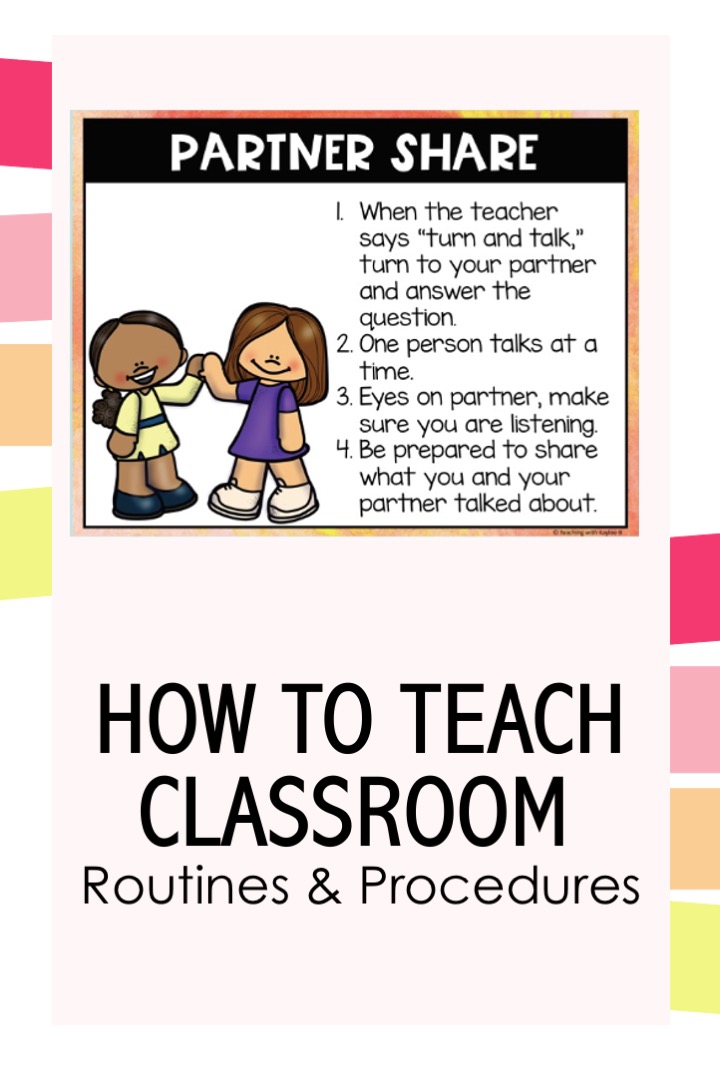
Teaching these classroom routines and procedures helps the school day run more smoothly.
Getting a Pencil: No teacher likes to be interrupted in a lesson because of a pencil. Or when you learn a student hasn’t been working because they don’t have a pencil… That is why you need a classroom routine and procedure for students for when they need a pencil. In my classroom we have a bucket of sharp pencils, and a bucket for dull pencils. Students know when they can go get a pencil or go switch out for a sharp pencil. Best part about this routine, no interruptions during instruction!
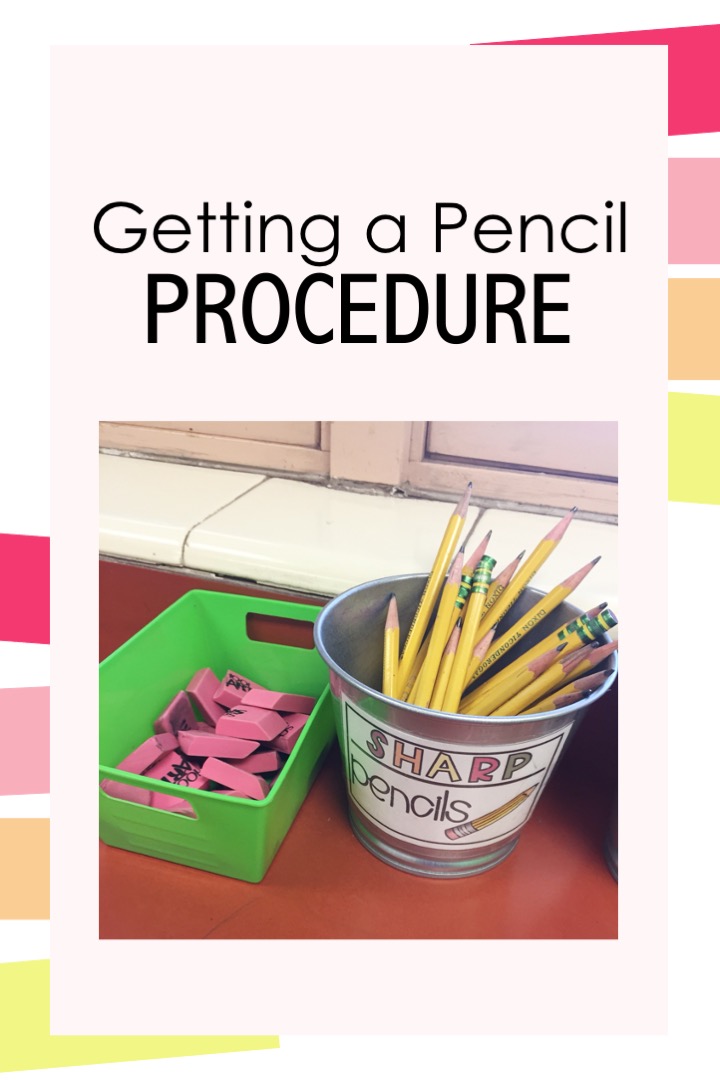
Classroom management isn’t all about helping students with behavior. It’s also about establishing classroom routines and procedures.
Passing Out Papers: When you need to get worksheets and papers out to students how can you do it effectively? I had students choose someone from their desk groups to come over to me and get the papers they needed for their group. This one got students working together as they choose who will get the pictures.
Turning in Work: Now that your students are finished with their work… where should they put it? Instead of getting many questions “where should I put this?” have a classroom routine and procedure so they know what to do with their papers! We have a “Turn in Bin” where students turn in their work.
Fast Finishers: Students finish their independent practice and turn it in… Now what? Well, students should know exactly what to do so they are not wondering around the classroom and causing trouble. My students know that when they finished their work they should check if they have any work they need to make up. Then they can read a book, get on a computer program, or play math fact games! I have lots of games so students are always engaged in fast finishers. For ideas on fast finisher activities, read this blog post here: 12 Fast Finisher Activities That Are So Fun
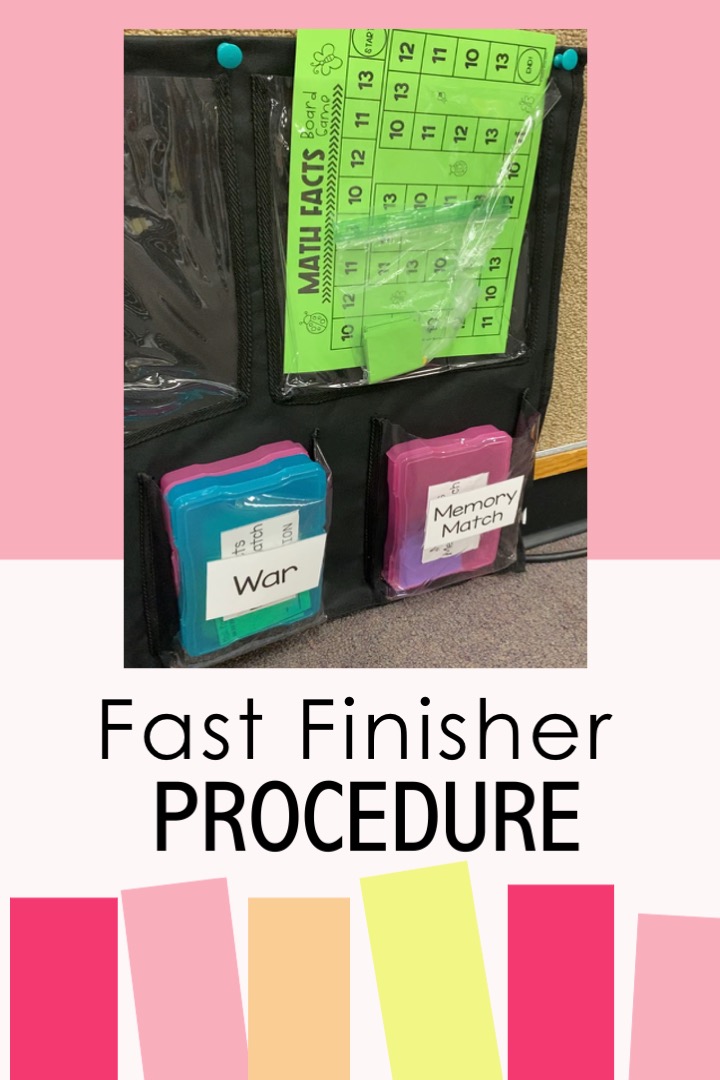
This classroom routines and procedures list will help teaching these to your students easier.
Using the Restroom: Students need to know when they can use the restroom and how to ask to use it. We go over the best time to use the restroom, good times to use the restroom, and bad times to ask to use the restroom. Students know they ask me and then go get our “bathroom cone” to put on their desk. This helps me remember who is out of the classroom using the restroom.
Classroom Routines and Procedures PowerPoint
Getting students to the point where they have every routine and procedure down takes some time and work but it is so with it. What I found that helped most was typing out each step to the routine is a PowerPoint and displaying it on the board for students. We go over the steps and then I model it for students. They now know what the procedure looks like! Then we practice as a class. Now students know what the procedure feels like! I also have students pay attention to how the procedure sounds like.
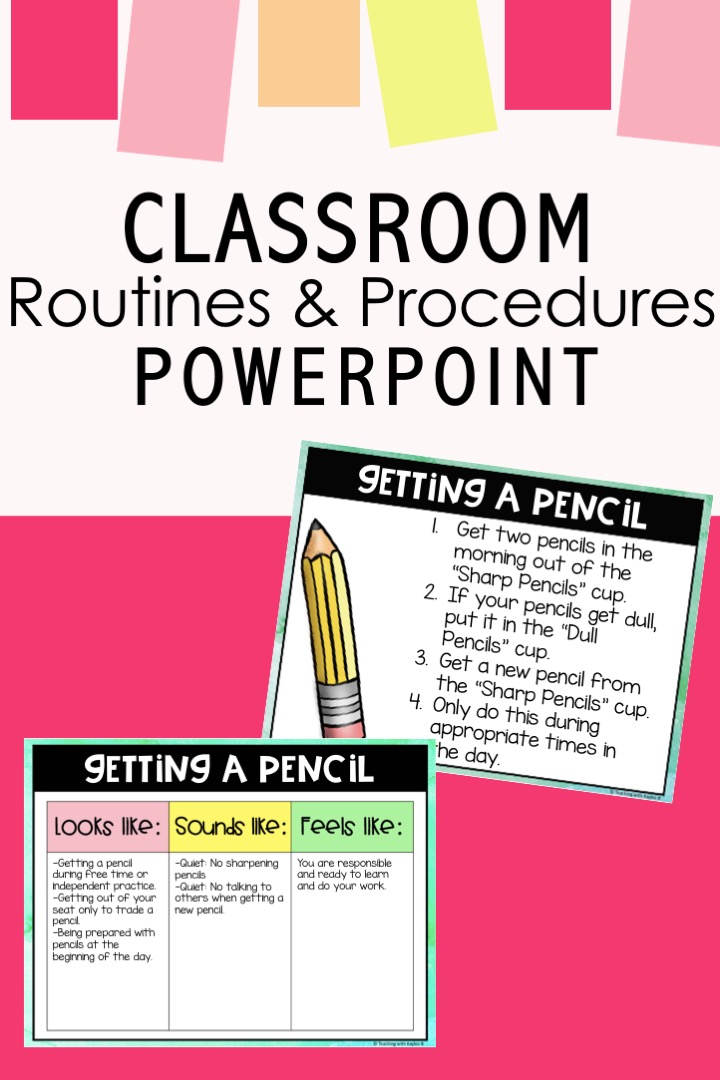
Having the steps to these typed out in a Classroom Routines and Procedures PowerPoint makes teaching these much easier.
I believe that students are most successful with procedures when they know how it looks like, sounds like, and feels like. That is why I also have a PowerPoint slide for each routine. As we practice the routine, we add bullet points to how the procedure looks like, sounds like, and feels like. I love the conversion we get going!
After a couple weeks of practice, students don’t need the PowerPoint anymore… But later in the school year we may need to review the proper expectations of a procedure so I will pull them up again.teach
Before the first day of school, I get all of my classroom routines and procedures typed up in the PowerPoint. It does take quite a bit of time. That is why I have a Classroom Routines and Procedures PowerPoint I want to share with you! It has 77 slides and 35 routines that are already typed out! Just tweak them to your needs. It also includes the “Looks like , Sounds like, Feels like” slides for each procedure. Find the link to it here!
You can find this Classroom Routines and Procedures Powerpoint in a money saving bundle here!
Establishing Classroom Routines and Procedures
During the first week of school, I pick a few key procedures to teach my students each day. At the end of the week, I like to do a fun review game for the classroom routines and procedures I taught that week. We play Classroom Routines and Procedures Charades.
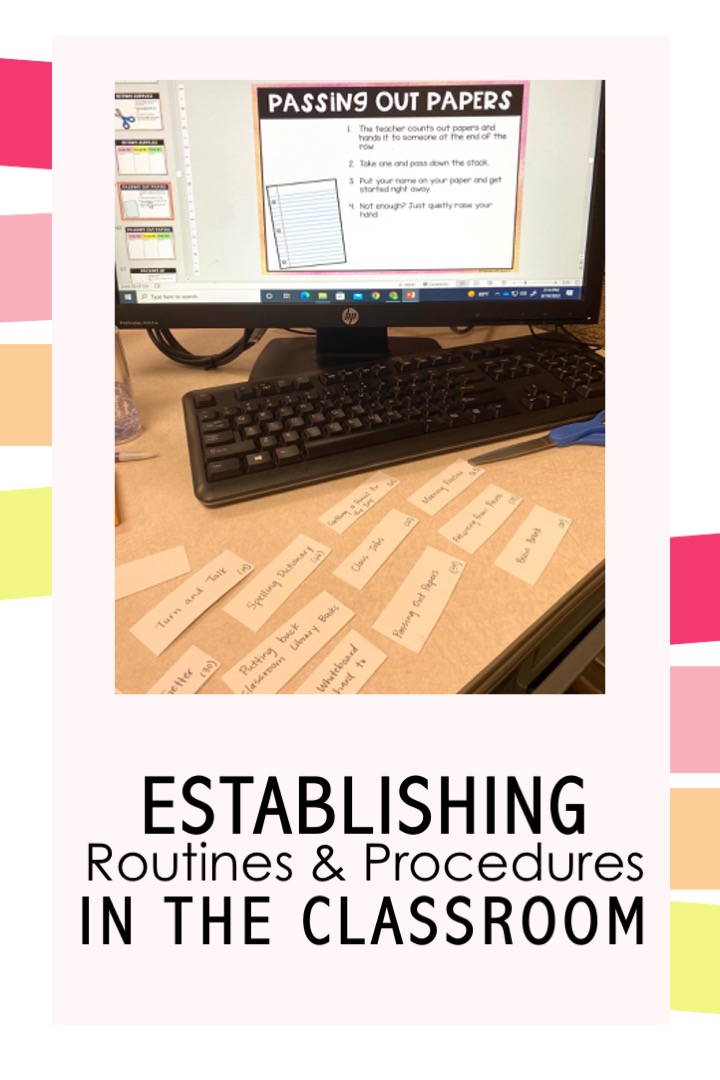
Make establishing classroom routines and procedures fun with activities and games.
I write down the routines and procedures I taught my students that week on little slips of papers. Students take turns pulling out a slip of paper and then showing the class the steps of that procedure. The other students try to guess which one is being acted out. I like to have my Classroom Routines and Procedures Powerpoint pulled up so we can do any reviewing we need to.
Find all of my classroom management resources in a money saving bundle here.
Looking for everything you need for Back to School? Check out this bundle where you get all of my classroom management tools plus other back to school essentials in this Back to School Mega Bundle here.
Looking for more classroom management techniques? Check out this blog post here!
Wanting meaning classroom setup ideas where students get involved? Check out this blog post here!
Needing even more tips for setting routines in your classroom? Check out this awesome blog post from Local Learners and Co: 3 Simple Steps to Teaching Classroom Routines in Math
Learn more ways to build a positive classroom community through establishing classroom routines and procedures in this blog post here.

